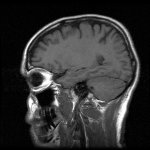Basic Symptoms of Bipolar Spectrum Disorders
Author: tiger Published Under: Health

Bipolar spectrum disorder(BSD) refers to a group of psychological disorders, usually characterized by changes in mood, as well as changes to the way thoughts are processed. Recent studies have found that around 3% to 8% of the world population suffer from some type of bipolar disease, which has a major impact on their lives.
In the past, those with bipolar disorders were usually described as being manically depressed. When the individual was in a relatively good mood they were considered to be in a manic state and when their mood dropped, they were considered to be in a depressed state, hence the term manic depression. Today, however, doctors have identified several BSDs, noting that patients can have a variety of symptoms and that the severity differs among individuals.
One of the biggest breakthroughs in the understanding of Bipolar disease is that it involves more than simply mood swings, but also includes things like difficulty processing information, such as poor organizational skills, problems sleeping, and extended periods of depression. These symptoms can occur even when the person is not in a manic or depressed state, which goes against the old thinking that in between periods of mania and depression, the person was relatively unaffected.
While there are several different bipolar disorders, they all share a common symptom of changes in mood, during which time the persons thinking and actions will be affected. Since it is a pyhschological problem, the effects can differ and are heavily based upon the actions of the indvidual, as well as their statements.
Mania and Hypomania
The changes in mood are often referred to as episodes, with each episode changing the way the person acts, thinks, or feels.
During an episode of mania or hypomania, which is simply less severe mania, it is common for the individual to exhibit abnormal moods, which are often irritable in nature. It is also common for them to feel an inflated feeling of self-worth, experience racing thoughts, rapid speech, and sleep less. The patient often reports that they feel very euphoric and finally good about themselves, sometimes even reporting being "juiced up."
It is also common for thoughts to race during a period of mania, with the patient feeling like their thoughts are extremely creative. Feelings of extra confidence are also common. Often, the individual will exhibit scatological thoughts, which seem to jump around, while also being very easily distracted and side tracked.
It is also common for levels of activity to increase, with less regard for the consequences of ones actions.
Depression
Periods of mania are typically followed by periods of depression, usually in stark contrast to the episode of mania. Symptoms of depression can greatly vary depending on the person. Some will have trouble sleeping, while others sleep too much. Others become very sad and exhibit a general loss of energy.
It is also common for the individual to begin thinking rather negatively, looking at small problems as if they were major and generally adding a negative touch to most topics. Many report that they simply can not move and even things like getting up out of bed can be quite difficult. However, it is also common for them to act in a rather restless manner, sometimes making it hard to differentiate between mania and depression.
Combination Episodes
Previous schools of thought had suggested that bipolar disorders where an either or situation, with the subject either being manic, depressed, or relatively "normal." However, today, most psychologists believe that there are also combination states or mixed states, during which the individual exhibits symptoms of both mania and depression.
For example, they may exhibit a great deal of energy, as you would expect during a manic episode, while simultaneously having a negative outlook on life, with anger often manifesting itself during mixed episodes. A person with BSD may appear to be moving extremely slow, while their mind is racing. Since combination episodes can be very strenuousness, as the individual is faced with what are essentially conflicting emotions and feelings, the risk of suicide is greatest during a mixed episode.